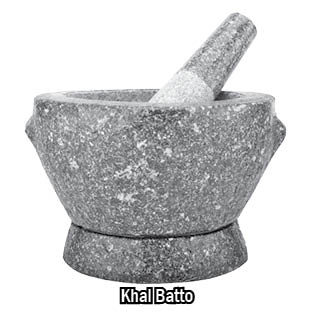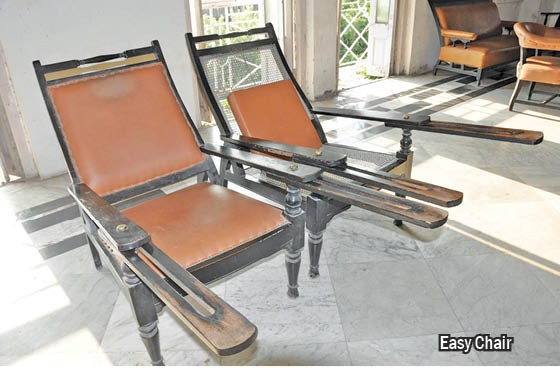 When things become old, we replace them with something new… a blitzkrieg of advertisements catch our eye, tempting and luring us to buy the new and dispose the old. We then boast about new purchases… “My triple door fridge,” or “our ultra-modern music-system.” Alas, soon, markets get inundated with newer, better and more advanced versions of whatever we bought and the new eye-catchers again climb to the top of our list of must-haves. My readers might wonder what the hell I am talking about, why am I am rambling on. Even Mme. Editor sternly quipped, “Tukku karo Darabsha, come to the point. This is a miniscule community’s weekly paper, not the New York times!” Gathering the courage, that only a man who has survived his marriage of forty-two years at that, that too as a teacher and a principal to boot, I retorted in as manly a voice as I could muster, “Madame, my output may be slow, but my writings are journalistic masterpieces.” Mme Editor gave a dark glance that only editors can, and back to the mousehood, I murmured, “yes ma’m, tukku, very tukku.”
When things become old, we replace them with something new… a blitzkrieg of advertisements catch our eye, tempting and luring us to buy the new and dispose the old. We then boast about new purchases… “My triple door fridge,” or “our ultra-modern music-system.” Alas, soon, markets get inundated with newer, better and more advanced versions of whatever we bought and the new eye-catchers again climb to the top of our list of must-haves. My readers might wonder what the hell I am talking about, why am I am rambling on. Even Mme. Editor sternly quipped, “Tukku karo Darabsha, come to the point. This is a miniscule community’s weekly paper, not the New York times!” Gathering the courage, that only a man who has survived his marriage of forty-two years at that, that too as a teacher and a principal to boot, I retorted in as manly a voice as I could muster, “Madame, my output may be slow, but my writings are journalistic masterpieces.” Mme Editor gave a dark glance that only editors can, and back to the mousehood, I murmured, “yes ma’m, tukku, very tukku.”
What I’m saying is there’s comes a time when we realize that what we hath changeth for the new, within a short time, becomes collector’s item and later, a valuable antique! Then we rue that what we sold off could have fetched us a bomb. There’s umpteen things that my mom, and later, my wife made me sell to the jari-puranawallas and to my regret, are now antiques, worth showing off to pals, neighbours and sagahwalas. I still miss my 1950s Encyclopedia set, my grandfather’s TLR Roliflex camera, my Grundig TK23 tape recorder circa 1963, my cherished collection of old Scotch and French brandy bottles – all now in great demand by collectors!
Old Parsi homes were huge and veritable source of ‘old things’ that are now collectors’ items. Imagine the character it would give to your home if at the very entrance one would notice a hat-stand with slots for walking-sticks, umbrellas, a trilby or panama hat – which were once a part of gentlemen’s attire… and a round mirror to give yourself a narcissistic wink!
An Edwardian style with marble tiles and an octagonal marble slab on top would stand proudly in the hall; big Chinese flowerpots atop or photo-frames of near and dear ones. A smaller table, a teapoy would hold the inevitable ‘ses’ with a ‘diva-nu-glass’. Remember those comfortable easy-chairs and huge arm-chairs, with a second revolving arm-rest under the top one, which could be extended to also rest the feet. Dining tables were huge and sturdy, something one imagined at Odin’s feast in Valhalla, with chairs handcrafted during the times of our great-grand papas. These old teak masterpieces were discarded when Parsis moved to smaller houses in suburbs or renovated their homes with characterless pieces in Formica – ugh!
Writing tables or escritoires with storage places were an essential part of household furniture during those letter-writing and greeting-cards-sending days, with accompanying accessories such as pens, holder and steel (nibs), crystal ink-pots with compartments for red and blue inks, pencils and blotters. Laptops or PCs were things of sci-fi comic books. These escritoires and ink-pots are valuable antiques now.
As punctuality was integral to Parsi character, one still sees old winding clocks keeping perfect time, at many Parsi homes. Old clocks with their sonorous bells or musical chimes striking at regular intervals made for a pleasant interlude on an otherwise dull or busy day. There were clocks in glass-casings or gilded cases, and clocks in bell-jars, but the most attractive ones were the porcelain decorative pieces with shepherds and shepherdesses in 18th century attires!
As a youngster, on one of those mandatory visits to a relative’s place, I counted about sixty-three photo frames around the 400 sq. ft. sitting room. There were men in pagris and phetas – with mustaches and beards, looking like characters in pirate movies! Some bespectacled, some with pince-nez and a couple even with monocles. Most had worn jama and pichori, some donned western attires; there were wedding pics couples in marriage regalia – ladies in broad bordered saris, heads covered coyly with ‘mathabanu and sor’, and net and lace sadra flowing out of their pearl, ruby or gold-buttoned blouses or ‘budians’. Wall displayed Graduation, Bachelor’s and Master’s certificates. Houses were a visual history of the colonial Parsis, with many boasting huge portraits of the King Emperor and the Queen.
Kitchens were a veritable source of antiques. Besides a kitchen platform or a ‘chulavati’ with a built-in stove using coal/wood fire, would be a ‘criterion’ stove that ladies swore by, for dishes requiring longer time over low flame. There were boilers or ‘bumbo’ for heating water – a boon to families when electric geysers were a luxury. Copper vessels of various sizes were used – big enough to cook the yearly wintery must haves – ‘vasanu’ and ‘kharia’ (paaya/trotters). These were sent for frequent process of tinning or ‘kallai’. Cookers comprised four stacked-up compartments in a cylinder (like tiffin carriers) – all made of brass, with a stove at the bottom. These adorn our living rooms as antiques. The old stone-made ‘khal-batto’ (mortar and pestle) now makes for rustic looking door-stoppers. Green-and-blue coloured plates, termed ‘chakli ne darakh ni vale ni plates’, which were used to send sev–ravo on auspicious occasions to neighbours, are now used as wall plates.
It is the travesty of our time that we enhance the beauty of our homes with curios and antiques, but the finest and most beautiful of all the ‘antiques’ – our old folks, our parents, are not at valued by many, rather, too many. We have indeed received a lot from our oldies, whom we euphemistically called our ‘senior citizens’. Their value should increase with age, not diminish.
They are the real vast repositories of our traditions, our culture and our history. Our children can learn a lot from them. In return, all they want are a few moments of your company and some good words. Our parents and grand-parents have given plenty, by way of love and devotion, and still have so much more to give.
A million visits and pilgrimages to temples and holy places cannot match the blessings of one’s parents. Value them. Care for them before it is too late and then, ruefully, pray for the touch of the vanished hand and the sound of the voice that is still.
We make resolutions every year and break them with equal nonchalance. Let us commit to be senior-citizen friendly with our folks who may have advanced in age, but within whom, beats an ever-youthful heart of gold, that only you can bring a smile to!
Jamshedi Navroz Mubarak to all!
- 48 And Still Going… Er… Um.. Strong! - 8 February2025
- Parsis – The Sweetest Bunch! - 28 December2024
- Hep Grannies, Swingin’ Grandpas!’ - 10 August2024
